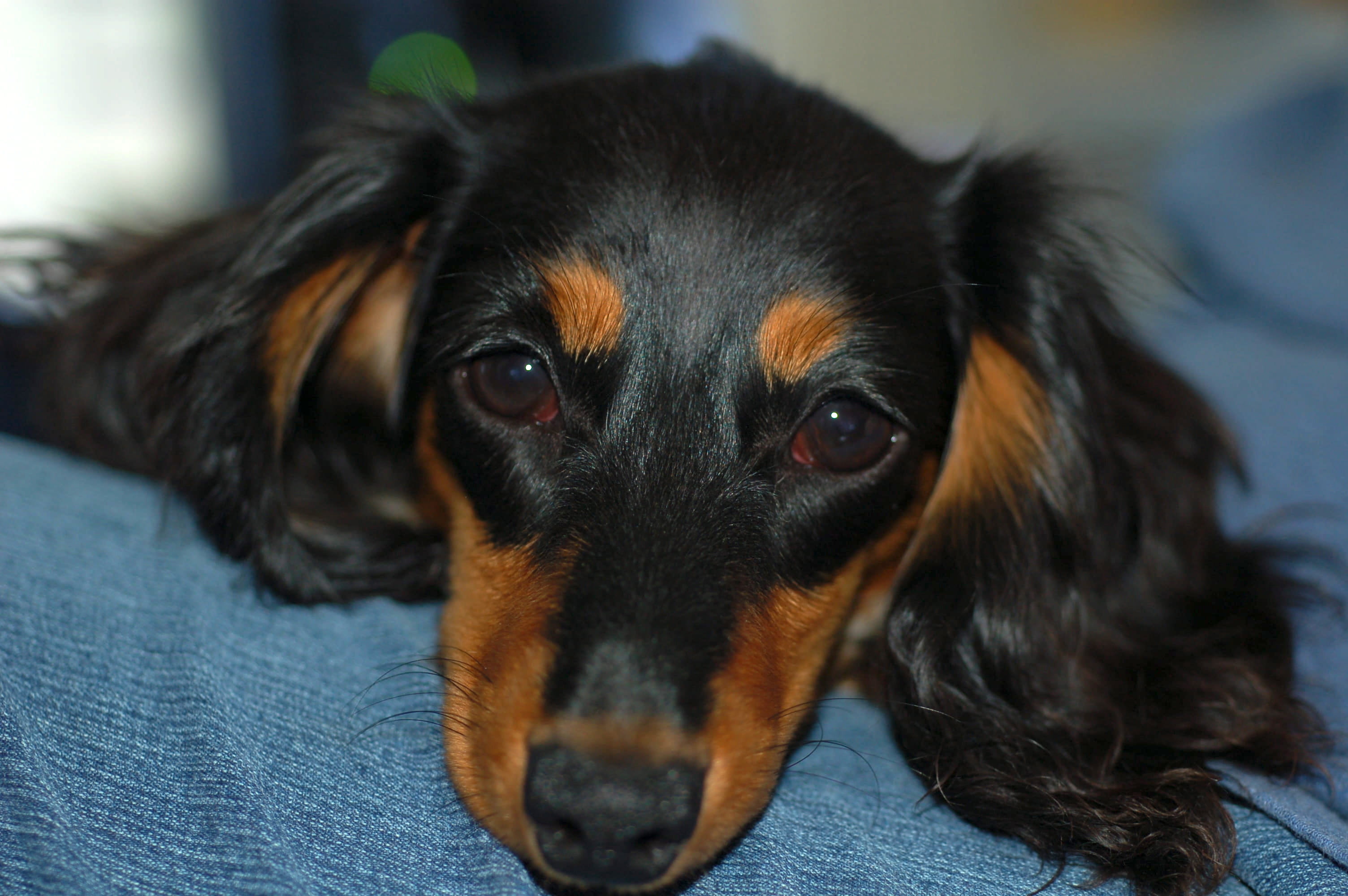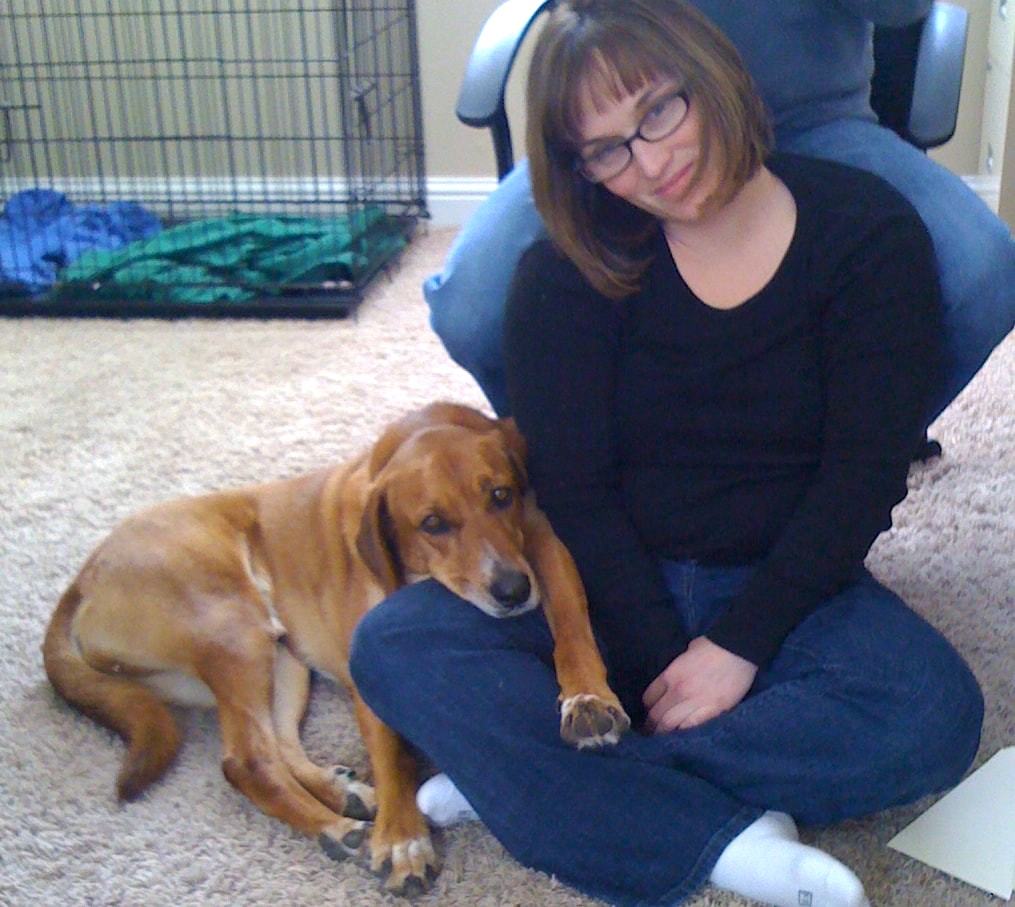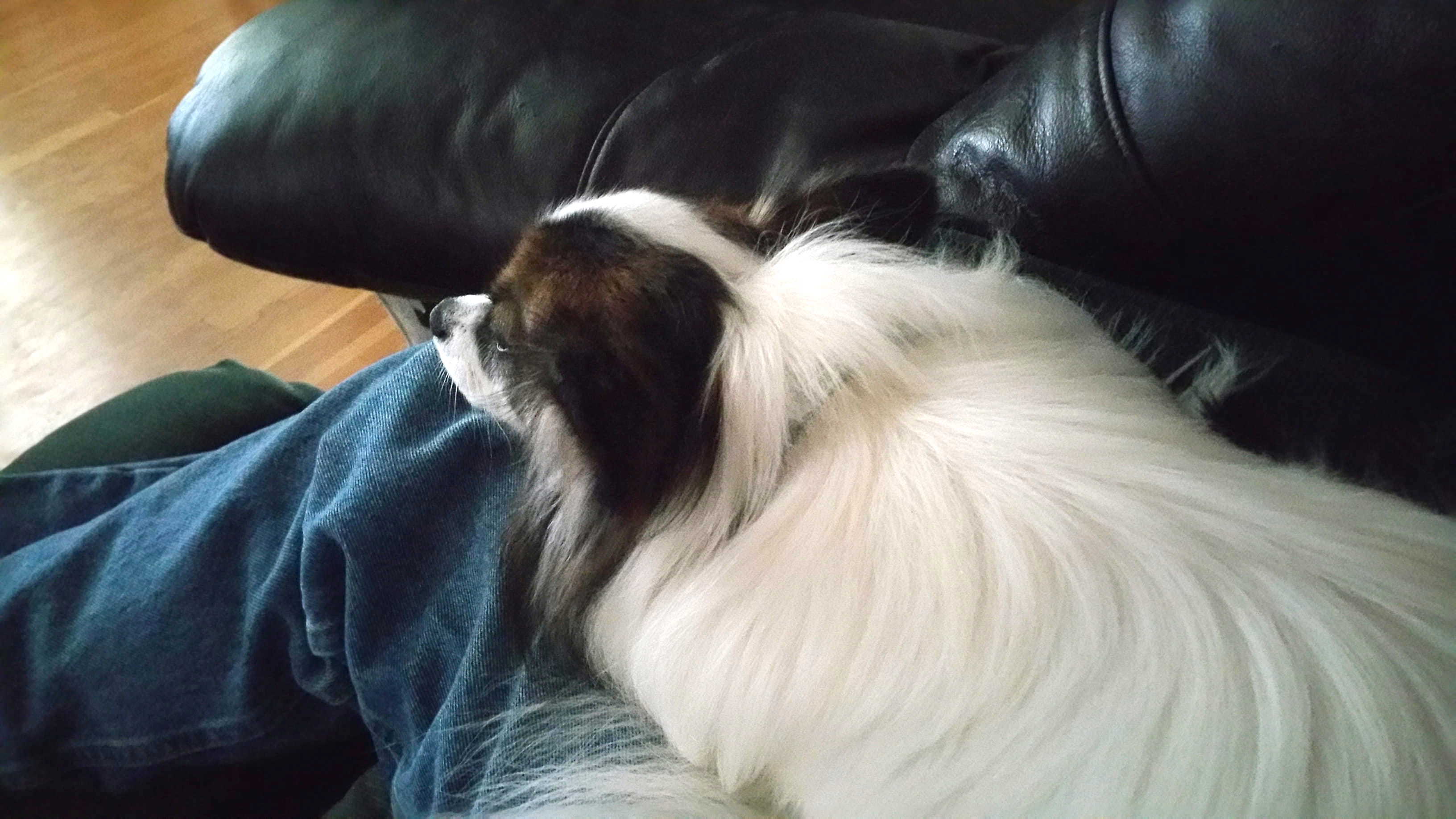How to train your dog to be an anxiety alert service dog

As a trainer, I am frequently asked, “Can my dog be an anxiety alert service dog?”
My first question is, “Do you suffer from anxiety?”
If yes, then the canine is a candidate for service work.
The hard part is training the owner more so than training the dog. Training takes time and commitment, but in the end, having a well-trained canine to help you in a moment of need can be invaluable.
In the past, we thought of service dogs only as eyes for the blind. Now, we see dogs used in mobility assistance for sufferers from multiple sclerosis, diabetic alert, and even armed forces combat veterans with Post Traumatic Stress Syndrome can benefit from specially trained animals. These are just a few among many other unseen disabilities.
Now, specially trained canines provide aid to people who suffer from anxiety by providing comfort, healing and an overall calming effect. A service dog can legally go anywhere. This is awesome, but it takes a lot of hard work and dedication.
In this article Al Cooper of Cooper K9 will cover the basic steps it takes to train up your furball to be an anxiety service dog. He’s helped many people successfully train their dogs to be diabetic alert and service dogs.
What is an anxiety alert canine?
An Emotional Support Animal (ESA) according to the US Dog Registry is a dog, “that provide comfort and support in forms of affection and companionship for an individual suffering from various mental and emotional conditions.” Specifically, an anxiety alert service dog is trained to provide support when their owner exhibits the onset signs of anxiety or panic attack.
Traveling with your ESA dog
Airlines typically allow ESA dogs with documentation in the cabin and ESA’s are permitted in “no pet” housing. Because of this many people now abuse the system and report their dog as an ESA dog despite them having little to no training in this area.
If I think a dog owner is asking about a service dog just so that they can fly on a commercial airline with their pet and escape the charges or having the animal in freight class, I offer advice that is sometimes unwanted. Training a service dog is a full-time commitment that will take months of consistent training, and then is a never-ending process that demands a lot of time and patience. It’s not a task to be taken lightly.
The last thing you want is for your “service dog” to have an accident on the airplane, to growl at another passenger, misbehave during security screening or bark during the flight. I can tell you that traveling with a well-trained service dog is challenging enough. The stress of traveling with an inadequately trained dog is not worth the peace of mind that a good boarding facility can provide at home.
What steps should I take to begin anxiety service training?
Here are some tips to get you started training your dog for work as an anxiety alert dog.
Associate onset of anxiety with a desired action
To begin, we want our dog to associate our onset of anxiety with the desired action that lets us know he recognizes our state of anxiety. This action should remind us we are feeling this way or about to feel anxiety. The action should calm us, and it should be subtle.
To start, our dog should be skilled in basic obedience, and be interested in us. You can teach them to give an alert and then perform the desired calming behavior.
For example, they can be taught to nudge you when they sense the oncoming anxiety attack.
Here is a great video that outlines the “nudge” or alert training.
Steps to train your dog to nudge
- Start with a paper plate; when the dog moves to sniff the plate, treat and praise or better yet, use a clicker.
- Eventually, only treat when the dog’s nose touches the plate and say “nudge.”
- Then move to a smaller target like a jar lid.
- Eventually, use a sticker on your pant leg. When the dog noses or nudges the smaller target, treat and praise. The nudge is an alert.

Training the desired comfort behavior
Now we’ll discuss the desired behavior which is for the anxiety service canine is to comfort us.
- We will train the command to “paws.” This is a good command word because we rarely use this word.
- Begin training on the floor. If you are unable to get on the floor, begin training on the sofa. If you can start on the floor with a high-reward treat, then have the dog lay across your lap. Help them at first. Position them just the way you want them (paws across your lap, laying on your lap, etc.)
- Now, be consistent with that position. When the dog gets in position, treat and praise. Repeat five times. Each time, help them if they need it and when in position, treat and praise and say “paws.”
- If they hold the position, that’s great. Say, “good paws.” Treat and praise. If you’re consistent, they will learn this new word by the end of the week.
Doing this just a few times twice a day is all you need. When the dog performs the paws command on their own without physical assistance, follow up 3 or 4 days with praise; excited voice, belly scratches, scratches under his chin, ear scratches, and petting.
Hold back the treats. Or, at least make the treats random. We want the dog to respond to the command and be rewarded by being close to us and receiving praise, not because they get a tasty treat. Treats are great for shaping behavior in the beginning.
Moving from the floor to the couch
When you have great and consistent success on the floor, move to the couch. I teach my dog the “up” command. I also teach the “off” command. “Up” means to jump up on something: a chair, into the car. “Off” is obvious. This is important because you can combine these commands with the one we just learned.
While sitting on the couch, say, “paws up.” Help the canine if needed and put them in position. Praise and treat. Treats will give them the courage to jump on the furniture and trigger their sharp mind that we are doing the same thing, just now on the couch. Treat at first then wean off the treats using only praise. We are striving to have a dog that performs the command and associates it with our anxiety, not a treat.
Same as before, be consistent. Just do this a few times and only move forward when they’ve mastered this command. Next, we are ready to associate this physical cue with our condition. Your dog may already be doing this!

Associating comfort training with your physical anxiety cues
You may already know when an anxiety attack is near. The person who lives with you and your dog might recognize it also. Your mate senses your change of mood, or you may have an annoying tick you do when experiencing an anxiety attack. It’s not uncommon for your dog to recognize it before both you and your mate. Your heart rate increases, your eyes twitch more, you give different physical cues, you perspire, and you smell differently.
What we want to do is associate these signs with the new command. This may lead to a candid discussion with your roommate about how he or she knows “it’s about to go down” at your house. Accept the feedback and try to pinpoint when you recognize the initial onset of anxiety or panic.
Select one or two physical cues to train
Focus on one or two things that always seem to occur; heart rate and fidgeting for example. These are the conditions we will train our dog to recognize. They will learn and eventually think, “Oh, here we go, time to jump into action!”
Now that you both have mastered the “paws” command at home train the command whenever you feel the cues you’ve selected happening. This is the interesting part because training goes from your prescribed schedule to who knows when and where!
Stick to the plan and don’t pass up the opportunity to train when it comes. This is a lot of work and can take several months, but just be consistent. Don’t give it up!
The day your dog alerts (nudges, gets beside you, whines) and you sit down to have him assume the paws position and feel the comfort they provide will be a day you never forget. They sense the anxiety from you now; you just have to reward their recognition of it.
Final thoughts and a word of caution
Keep in mind this is a brief how-to synopsis of hours of reading and educating yourself, but with consistency, there is a good chance your dog can be an anxiety alert dog. A service dog can accompany you anywhere, but training a dog to accompany you everywhere takes 18 months to 2 years.
The dog should have some formal training. I highly recommend at a minimum that both canine and handler work towards an AKC Canine Good Citizen Certificate.
Most people don’t have the time to invest in training a dog for service work. To purchase a service dog can cost tens of thousands of dollars and there are plenty of people getting ripped off every day so do your homework.
If you don’t have the time or money to select, purchase or train a service dog, consider training your dog to be an Emotional Support Animal (ESA). When we focus on and commit to our animal and then see the ensuing result, it is nothing short of therapeutic.
-Till next time
Al Cooper
Al Cooper is the owner of Cooper K9, a service and companion training program. Al has been training and caring for dogs for almost 40 years. He loves to help strengthen the bond and working relationship between dogs and people. Al believes the training process should be fun, rewarding, and most importantly get results. You can read more about his services and thoughts on training over at his blog Cooper K9.
Featured image by:Ben Yanis
